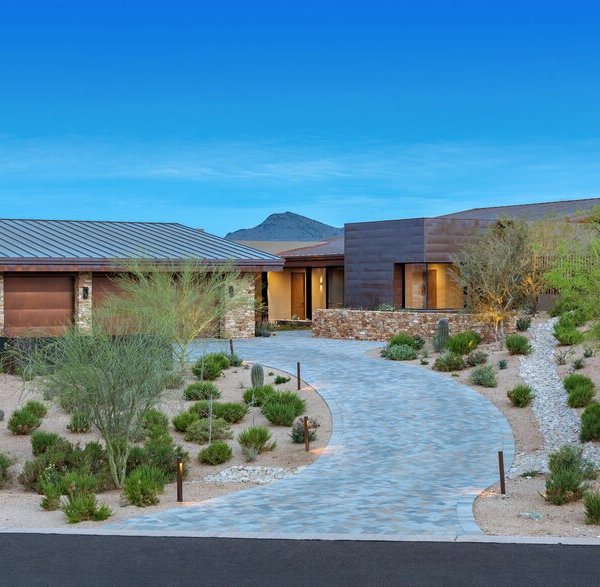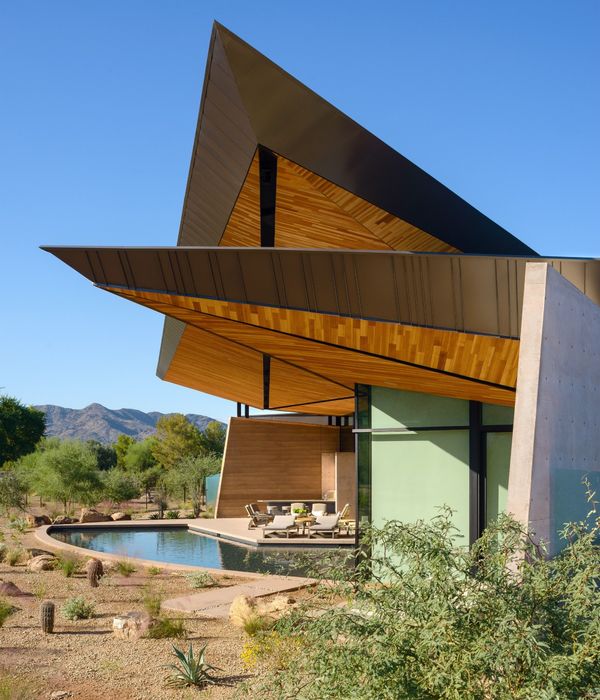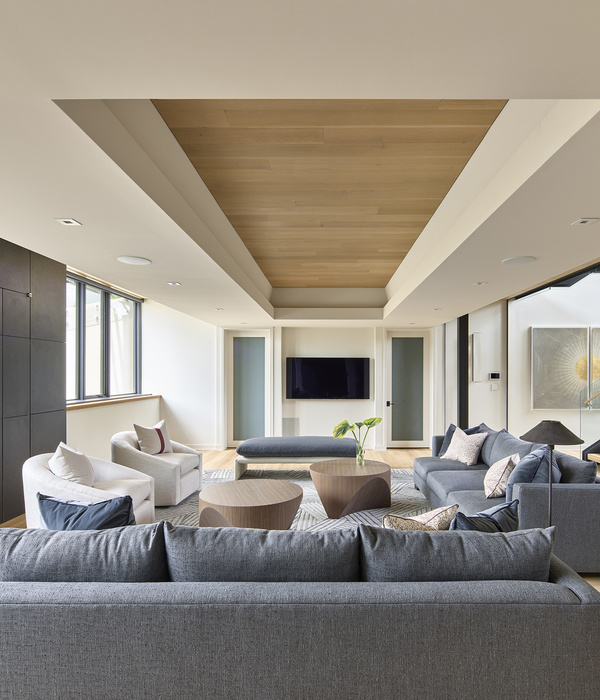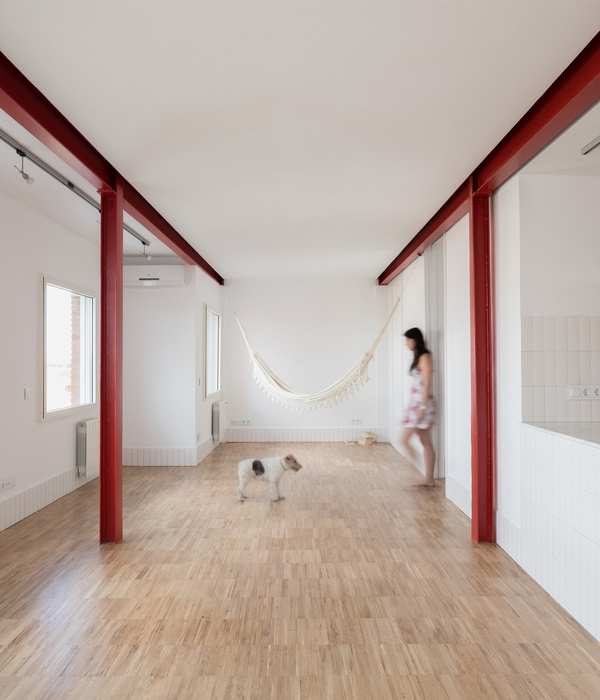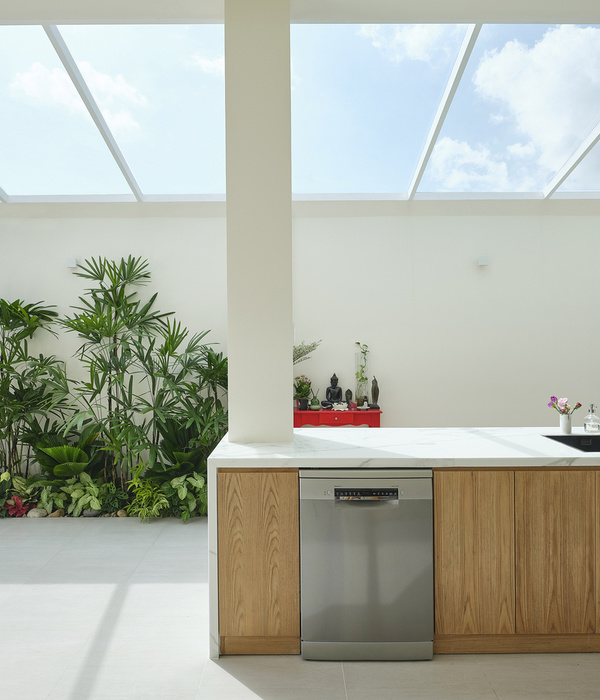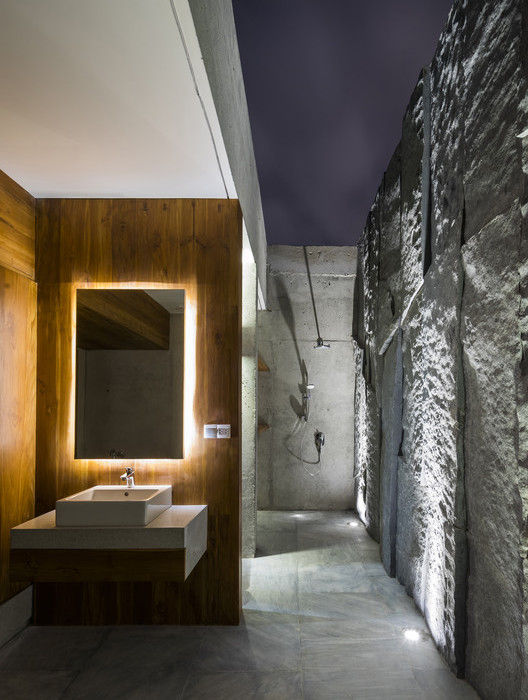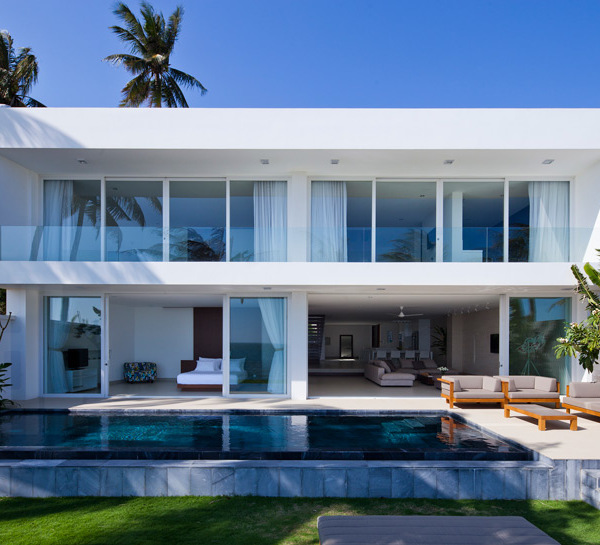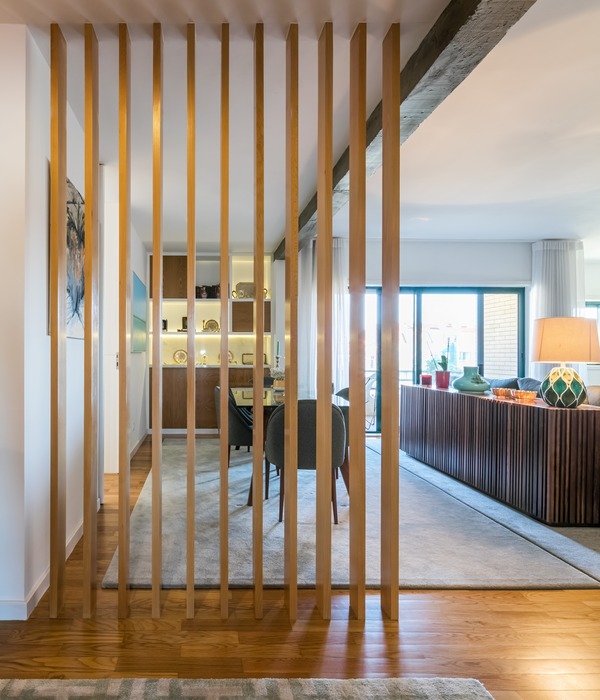"的格式进行了排版。如果您还有其他需要帮助的地方,请随时告诉我。
With the theme of Cities, Grow in Difference, 2017 Bi-City Biennale of UrbanismArchitecture (Shenzhen) selected the Urban Village of Nantou Old Town, Shenzhen as the main venue for exhibition to explore into another vision and possibility of urban life against the backdrop of rapid urbanization in China and the world.
Doreen Heng LIU, Principal Architect of NODE, was invited by Yantian District government to act as Architect and architectural curator of Yantian venue.
She decided to follow the urban renovation and renewal approach as shown in 2015 UABB, i.e. to take Dameisha Village as an example and follow a continuous methodology of literature review, field research, practice intervention and interdisciplinary integration, so as to explore a new idea or possibility for community renovation and city-village coexistence in Yantian District.
俯瞰大梅沙村,overlooking Dameisha Village©NODE南沙原创
大梅沙村Dameisha Village有别于那些夹杂在深圳中心城区众声喧哗、鳞次栉比的城中村,盐田大梅沙村是一个不急不躁、慢条斯理的“非典型”城中村;它的北面是Steven Holl设计的深圳万科中心;南面是每个节假日就拥挤不堪的大梅沙海滨公园和度假酒店。始于经济和政治的地缘优势,大梅沙村同深圳的其他城中村一样,经历自上而下的城市化进程,周边新建的高端楼盘和旅游业的快速发展在给大梅沙村的原住居民带来了大量的直接经济收益的同时也创造了大量就业机会,伴随而来的是不断涌入的外来人口对于廉价租赁空间的需求。而地处旅游区的大梅沙村由于规划管控,没有像其他城中村那样疯长出高密度的握手楼,这里依然是邻里街坊随遇而安、岁月静好的模样:多年来原有村落一直只是一二层楼高;虽是客家聚落,却没有传统客家民居的宗祠和祖屋,村里唯一一处与民俗信仰有关的场所是北入口进村的一个老榕树和榕树下放着的各种信仰的神龛;除此之外,村里的公共空间也只有南入口进村几十米处的一个市场集散地以及东入口附近的菜田地,这三个公共空间通过旧村落自然发展出来的基本街道串联起来,加上散落在街道之间各式各样民宅和小菜田,就构成了整个大梅沙村的日常生活场景。在高层林立和车来人往的现代环境里,这种半自给自足的村庄生活突显出它的另类和别样风味。当然,不无例外的,大梅沙旧村西侧还有依据10X10平方米标准宅基地规划出来的方格新村,但相比于自然生长的旧村,新村显然缺乏一种自下而上的亲和力。
▼10号楼&9号楼原状,original state of House 9&10
Different from those urban villages within a bustling urban setting in downtown Shenzhen, Yantian Dameisha Village is a non-stereotyped urban village featuring an unhurried and calm manner, with Shenzhen Vanke Center designed by Steven Holl on the north and Dameisha beach park and resort hotel, both frequented by swarms of people on holidays, on the south.Thanks to geographical advantages in both economy and politics, Dameisha Village, like many other urban villages in Shenzhen, underwent a top-down urbanization process. The emerging high-end buildings nearby and rapid development of tourism brought direct economic benefits to local residents and also created many job opportunities. In the meantime, the continuous influx of migrant population also triggered a growing demand for cheap rental spaces. However, though located in the tourism area, due to planning and control, Dameisha Village does not see any dense buildings springing up in close proximity like those in many other urban villages. Here, the neighborhood enjoys a casual life and peaceful time. For many years, village buildings remain only 1 to 2 floors. Though it is a settlement place for the Hakka, there is neither temple nor ancestral house of traditional Hakka dwellings. And the only place associated with folk custom and religion is the old banyan tree and the shrines under it at the north entrance to the village. The other two public spaces in the village are the market place about dozens of meters away from the south entrance and a vegetable field near the east entrance. The three public spaces, interconnected via the naturally extending ancient village streets dotted with private houses and vegetable fields, form the daily scene of village life. In contrast with the modern high-rise buildings and busy traffic, such semi-self-sufficient village life boasts a very distinct and unique style. Of course, without exception, on the west of the Dameisha Village, there is a new square village established on a 10X10m2 typical foundation. Compared with the ancient village, the new one apparently lacks unity that grows from a bottom up approach.
▼临时展馆原状,original state of exhibition hall
▼五百米公共街道原状,original state of500m public street
建筑实践展:空间再生产
经过数次场地踏勘和与当地村民沟通后,我们逐步梳理出一条清晰的空间再生产叙事策略:遴选出10栋点状分布的民宅进行建筑改造,村里现有500米长的街道串联起这些民宅,以及榕树广场、中心广场和菜田地,同时因为展览本身的诉求,我们选择在菜田地上建造1个临时展馆,作为供整个展览集中展示的大空间。以厨房为展览和改造的主题,将之嫁接于 “1+10+500”的空间上,——依循村里旧建筑的改造与村中的日常生活在同一时空并行,相比空间改造而言,我们更注重大梅沙村居民生活品质的提升,希望以此能撞出不一样的实践。邀请有相似经验、不同角度的建筑师参与改造,是创作出多元差异性空间的前提和基础。这次实践展邀请了来自北京、上海、深圳的不同设计风格的五家建筑师事务所(刘珩 + 南沙原创;俞挺 + Wutopia Lab;杨小荻 + 普集建筑;张斌 + 致正建筑;臧峰&James SHEN&何哲 + 众建筑),以半命题作文的方式参与建筑的微改造。建筑师根据现状建筑的空间形式因地制宜地进行改造,发挥各自独有的创作风格。其中,榕树边的十号楼、菜田地展览馆和九号楼,五百米公共街道由南沙原创建筑设计工作室设计完成。
Following site visits and communication with local villagers, we gradually developed a clear narrative strategy for the reproduction of spaces, i.e. to select 10 individual residential buildings for renovation, connect these buildings via the existing 500m village street to the banyan square, central square and vegetable field. Besides, to meet the needs of the exhibition, we also decided to establish a temporary exhibition hall on the vegetable field to provide a generous centralized space for exhibition. Thus the exhibition and renovation theme of kitchen is integrated into the“1+10+500”spatial context, extending in parallel with village building renovation and daily village life in both time and space. Instead of mere spatial renovation, we are more focused on improving the quality of life in Dameisha Village, in hopes of creating different experience. Involving architects with similar experience in renovation but different perspectives is the precondition and basis for creating diversified and differentiated spaces. Invited to this exhibition were five architect offices (Doreen Heng LIU + NODE Architecture& Urbanism, Yu Ting + Wutopia Lab, Yang Xiaodi + Projective Architecture Office, Zhang Bin + Atelier Z+, Zang Feng & James SHEN & He Zhe + People’s Architecture Office) of different design styles from Beijing, Shanghai and Shenzhen. They participated in the micro renovation within a half-defined framework, which meant they would renovate on the basis of the existing architectural form and local conditions in their own ways and styles.House 10 by the banyan tree, exhibition hall on vegetable field and House 9, the 500m public street are designed by NODE Architecture& Urbanism.
▼大梅沙村鸟瞰,项目区位,Dameisha Village aerial view, project location©NODE南沙原创
榕树边的十号楼House 10 by the banyan tree
如同典型的南方自然村落, 榕树是一个村的灵魂和生活中心. 由于没有一个固定的宗祠,以及大量外来人口的涌入, 大家都不约而同地在这榕树下参拜各自信仰的神仙,榕树下就类似于一个百家神的聚集地。榕树旁有一个约100平方米的单层封闭建筑(现为10号楼), 是原来老村的粮仓,已经废弃多年。虽然只有一层,但封闭的混凝土墙体与旁边开放性的广场和街道肌理格格不入。当我们接手这个项目的时候,考虑到其地理位置的特殊性,认为这栋建筑应该是一个开放的空间,与居民生活有互动,能成为一个公共场所,一个社区服务中心,例如书店或小的戏剧社,可以带动整个村落的活力。甚至能跟榕树和神龛产生一些跨越时空的对话。
Just as the typical village in the south, the banyan tree symbolizes the spirit of the village and is the center of village life. Since a permanent temple is not available and the village has large numbers of migrant people, all would gather under the banyan tree voluntarily to worship gods of their own religions, making it a gathering place for worshipping all gods.
Near the banyan tree is an enclosed single-floor building in about 100m2 (now House 10), which used to be the barn of the village and has been abandoned for many years. Though the building has only one floor, its enclosed concrete wall looks rather incompatible with the open square and street fabric nearby.
Taking over this project and considering its special location, we decided to make it an open space for interaction. It can be a public space, or a community service center, where, for example, a bookstore or a drama club could be provided to revive the entire village, or even create a dialogue with the banyan tree and the shrines across time and space.
▼十号楼鸟瞰,House 10 aerial view
▼从村中巷道看向10号楼,looking from village lane to House 10
▼10号楼外观,exterior view
▼10号楼&钢楼梯走道,House 10 &Steel staircase aisle
改造遵循着因地制宜,顺势而为的原则,提出“通”、“融”、“透”的设计理念。 “通”——斜切的楼梯通道嵌入原建筑,打通了巷道与榕树头广场的路径,延续城中村巷道四通八达的特征;“融”——保留原建筑首层框架结构作为基本结构体,架起一个新二层,曲面屋顶的弧度及天窗与神龛处的大榕树遥相观景,并突出场所感;“透”——采用透明阳光板减轻建筑的体量感,建筑室内空间与室外空间相互渗透,新二层立面及屋面的轻和透,与原混凝土结构的重和沉,形成鲜明对比。虚与实、新与旧,独立与融合,改造后的建筑,一方面通过保留原有承重结构和回应榕树的空间关系,尊重了原有村落文化和空间记忆;另一方面,又通过拼贴式的城市设计手法, 打破围墙,将自身“强行”植入到原来街道肌理中,给居民带来了不同的空间体验和时尚感。
House 10 is renovated based on the existing conditions and topography as well as the design concept of “interconnection”, “integration” and “transparency”. “Interconnection” – with diagonal stairways embedded into existing building, alleys and Banyan Square are interconnected, continuing the typical feature of alleys in urban village to be accessible from all directions. “Integration” – the original frame structure on F1 is retained as the basic building structure, from which a new F2 is added. The curved roof and skylight echo with the banyan at the shrine from a distance, reinforcing the sense of place. “Transparency” – transparent sunlight panels reduce the massiveness of the building, while the interior and exterior building spaces mutually penetrate into each other. The light and transparent facade of the added F2 and roof constitute a sharp contrast with the massiveness of the original concrete structure. We combined the void with the solid, the new with the old, and solitude with interaction. As a result, the renovated building retains existing load bearing structure and echoes with the banyan in space, showing respect for the original village culture and space; moreover, the urban design approach of collage breaks through the enclosed walls and forcefully penetrates into existing street fabric, offering totally different spatial experience and sense of fashion to the villagers.
▼斜切的楼梯走道和二层展览空间,the oblique staircase aisle and exhibition space on second floor
二层展览空间,exhibition area on second floor
值得一提的是10号楼这次的“艺术介入”。艺术家宋冬一开始就对老村的这个榕树下的神性空间特别关注,因而希望借此旧粮仓进行创作。这是刘珩和宋冬的第二次合作,但这次合作双方没有碰过面,最后发现宋冬的作品《城中村中城》跟10号楼的空间策略竟然不谋而合。也许是共同的出发点和榕树所具有的精神性的作用,让建筑师和艺术家在这里做出各自的想象,彼此共生共享,共同激发出城中村的活力。
The artistic intervention in House 10 is really something worth mentioning. Artist Song Dong, who showed particular interest in the mysterious space under the banyan tree since the very beginning, intended to create his design based on the old barn. That was the second collaboration between Doreen Heng Liu and Song Dong. Though they never met each other in person during the entire process, in his work Urban Village in City, Song Dong saw eye to eye with the spatial strategy of House 10. This was probably due to a common perspective and the spiritual role of the banyan tree, which freed the imagination of both the architect and the artist to realize coexistence and sharing, and fully bring out the dynamism of urban village.
▼10号楼首层宋冬作品《城中村中城》,Urban Village in City©上启艺术
▼从10号楼二层看饼干装置《城中村中城》,looking at the installation from second floor©NODE南沙原创
菜田地展览馆Exhibition hall on vegetable field
村里东南角,在民宅之间保留有一处约800平方米的空地,那里曾经也是宅基地,但如今已然废弃,变成了几户居民家的菜田地。由于展览需要一个较大的空间去承载,这里是最佳的场所选择。我们注意到大梅沙的建筑基本上都是10x10m的宅基地尺寸,在场地中间现存有一栋约100平方米的L型住宅。设计构思源于对这栋需要保留住宅的尺寸的演绎以及由宅基地的面积所带来的村落肌理空间的思考。我们的设计首先将整个场地划分为若干100㎡的宅基地尺寸,并在此基础上将每一个宅基地尺寸二次分解为室内和室外,室内空间和室外庭院的排列组合形成6个相对独立又彼此串联的展览空间。多个室内与室外的交叉组合让“盐田盐•盐田田”的专题展览空间具有一条清晰的线形流线,也让游客在进入同一空间时拥有多种选择。
In the southeast corner of the village is a piece of idled land about 800m2 surrounded with residential buildings. The land once served as building foundation and has been abandoned ever since. Now it is the vegetable field of several families and could be the best option in offering the relatively large space required by the exhibition. We have noticed that, most buildings in Dameisha are basically built on a 10x10m foundation, and a L-shaped building of about 100m2 stood in the center of the land. The design concept is derived from the interpretation of the scale of the preserved house and the thoughts on village fabric and space resulting from the size of the house sites. In our design, the whole site is firstly divided into several 100m2 house sites, each further divided into interior and exterior spaces. The interior spaces and exterior courtyards are arranged into 6 independent yet interconnected exhibition spaces. With various intersection and integration of the interior and exterior, a clear circulation is established in the exhibition space of “The Salt of Yantian, The Field of Yantian”, it also offers multiple options for visitors to access one same space.
▼展览馆鸟瞰,exhibition hall aerial view
▼展览馆主入口,exhibition hall entrance
展览馆报告厅,lecture hall
在菜田地展览馆内举办的设计论坛,design Forum held at the exhibition hall
▼展厅空间,exhibition space
展览馆小庭院,exhibition hall small courtyard
站在9号楼看临时展馆,looking at the exhibition hall from House 9
菜田地展览馆和9号楼之间的广场是我们最后的一个设计内容,一开始没有考虑到两者之间的关系,设计过程中发现在这两栋建筑是可以在空间上产生对话的,所以我们在广场上引入了楼梯,希望人们可以在这里逗留,逗留的时候既可以看到9号楼也可以看到新的展览馆。在9号楼的立面上做了银色的反光漆,反射对面新的建筑。在广场上,则尝试使用发光石,夜幕下的广场有着星星点点的浪漫,成为村里独一无二的邻里交往场所。
The square between the Exhibition hall and House 9 was the last to be designed. At first, the relation between the two buildings was not considered, but during the design process, we discovered that the two could actually create a dialogue in space. Therefore, stairs are introduced on the square for people to stay, where they can enjoy the view of both House 9 and our new exhibition hall. The facade of House 9 is clad with reflective silver paint to reflect the new buildings on the opposite side. On the square, glow stones are tried to create a romantic square with glittering stars at night, thus creating a unique village venue for interaction.
▼9号楼与展览馆之间的钢楼梯,steel staircase between building 9 and exhibition hall
发光石广场,luminous stone plaza
▼9号楼夜景图,House 9 night view
▼9号楼二层展览空间,exhibition area on second floor
▼9号楼内部通道,House 9 corridor
五百米•游戏间500m fun space
五百米的展览路径围绕大梅沙居民靠海生活的“水文化”展开,通过将场地现有零散空间进行梳理和整合,发展出A、B、C三条展览路径,以及神龛和街心公园两个重要空间节点。街道地面以灰色透水砖方式来修复和整合不同材质的原始地面,部分灰砖表面涂刷渐变蓝漆来延伸“水文化”意象。
The design of a 500m public street centers on the “water culture”of Dameisha villagers living on the sea. Through organization and integration of existing random spaces on site, three visiting routes, i.e., A, B and C, as well as two key spatial nodes, i.e., the shrine and street garden are generated. Existing street surface of various materials are repaired and consolidated with water permeable grey bricks, some of which are coated with blue paint to symbolize the extension of “water culture”.
▼公共街道鸟瞰,public street aerial view
在A街的设计中,以“街道客厅”作为主题,回收利用废旧家具,将不同的情景装置作为一个个人性化的公共设施放入到大梅沙村的公共街道中。
B街作为本次展览的主路径,衔接了1-9号楼以及展览馆,每栋改造建筑都对应着一条鱼灯作为建筑入口的导引,而鱼灯设计原型来自盐田区享有国家级非物质文化遗产的沙头角鱼灯舞所用鱼灯。
C街作为本次展览的特别路径,其设计从“日常性”街道主题切入,糅合了村民生活中晾晒、储物、种植、休憩等日常行为,用模数化的框架结构整合设计,同时也让村民真实的日常生活成为展览的一部分。
In the design of Street A, which is themed as “Street Parlor”, old-fashioned furniture is re-used in different scenes and placed in the public street of Dameisha Village as people-centered public facilities.
Street B, as the main visiting route, connects Building 1 to 9 and the exhibition hall. Each renovated building has a fish lantern as the sign of building entrance. The fish lantern design is originated from the fish lantern used in Sha Tau Kok fish lantern dancing from Yantian District, which is listed as national intangible cultural heritage.
The design of Street C, as a special route of this exhibition, is approached via the theme of a “daily” street, integrating the daily activities of villagers including sun drying, storing, planting and resting etc. The design is integrated into a modular frame structure, while the real daily life of villagers also becomes part of the exhibition.
▼日常生活的C街,C street for daily life
▼C街细部,C street details
▼街道客厅的“菜园”情景,the “vegetable garden” scene in the “Street Parlor”
▼鱼灯,fish lantern
后记:城村共生
Postscript: city-village coexistence
法国著名哲学家Henri Lefebvre 在他著作《城市革命》(The Urban Revolution)中对“城市”定义为“The Urban”, 而不是“The City”。他认为,“城市创作了什么?什么也没有。它只是把创造变成了它的核心动力,因而它又是所有。如果没有交换,没有联合,没有接近,即是说,没有相互作用和关系,城市就什么都不是;城市创造了一个场景,在这个场景里,不同的事件一件接一件地发生,所有这些差异,不是独立存在的,而是因为差异而产生了相互作用和关系。”因此,城市(The Urban)是一个纯粹的空间:相遇、集结和同时性的场所。这空间里没有具体的内容,但却是活力和吸引力的核心。城市是魅力的场所,但它不是一个形而上的集合体,而是一个具体的、不断实践中的抽象性。有生命的生物,工业的产品,财富和科技,文化产物,生活方式、阳春白雪下里巴人的日常。城市积累了各色各样的内容,但又不同于也多于单纯的“积累”……总之, 城市, “既形式也容器,既空虚也丰富, 既超物体也无物体; 超越意识又是意识的集合体, 与形式和内容差异性和复杂性的辩证逻辑相关联。” 村是厨房,只是在快速城市化的过程中,城和村有可能共生共荣共享在建筑和艺术领域的实验和尝试。它不是一个乌托邦,是一场完全可以操作和实现的“软硬兼有”的空间再生产实践。
▼村是厨房, 戏隐人生,The Village is Kitchen and a Miniature of Life ©NODE南沙原创
项目名称:盐田大梅沙村建筑改造及公共空间提升:菜田地展览馆 / 榕树边的十号楼 / 公共街道
建筑师或者建筑公司:南沙原创建筑设计工作室
设计时间:2017年4月—10月
建设时间:2017年10月—12月
主持建筑师: 刘珩
设计团队名单:刘珩、黄杰斌、吴丽娴、张继源、杨嘉惠、黄赞宁、洪荻|徐志波、Ivana、李诗瑶(实习)项目地址:深圳市盐田区大梅沙村
建筑面积:菜田地展览馆:407.9平方米
榕树边的十号楼:206平方米
九号楼:260平方米
摄影师:CreatAR Images + 南沙原创建筑设计工作室
结构:深圳佰邦建筑设计顾问有限公司
重点照明:深圳汉都灯光设计咨询有限公司
客户:深圳市盐田区人民政府
材料:菜田地展览馆:混凝土、玻璃、青砖
榕树边的十号楼:钢板、透明阳光板、青砖、玻璃
九号楼:钢板、玻璃、马赛克、彩色自流平
关于您的问题,我需要您提供需要排版和拆分的文本。请提供您需要处理的文本,我将为您处理。
{{item.text_origin}}


